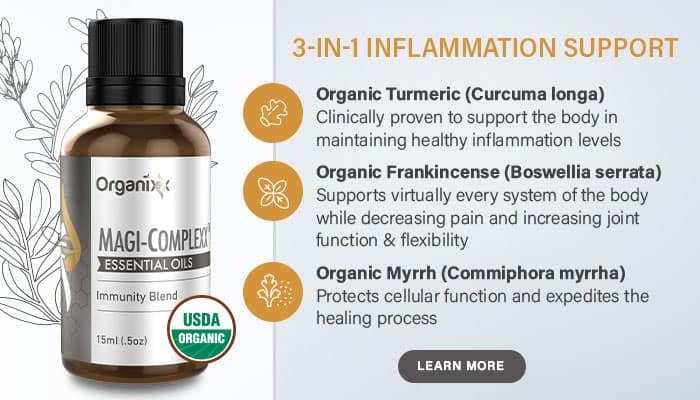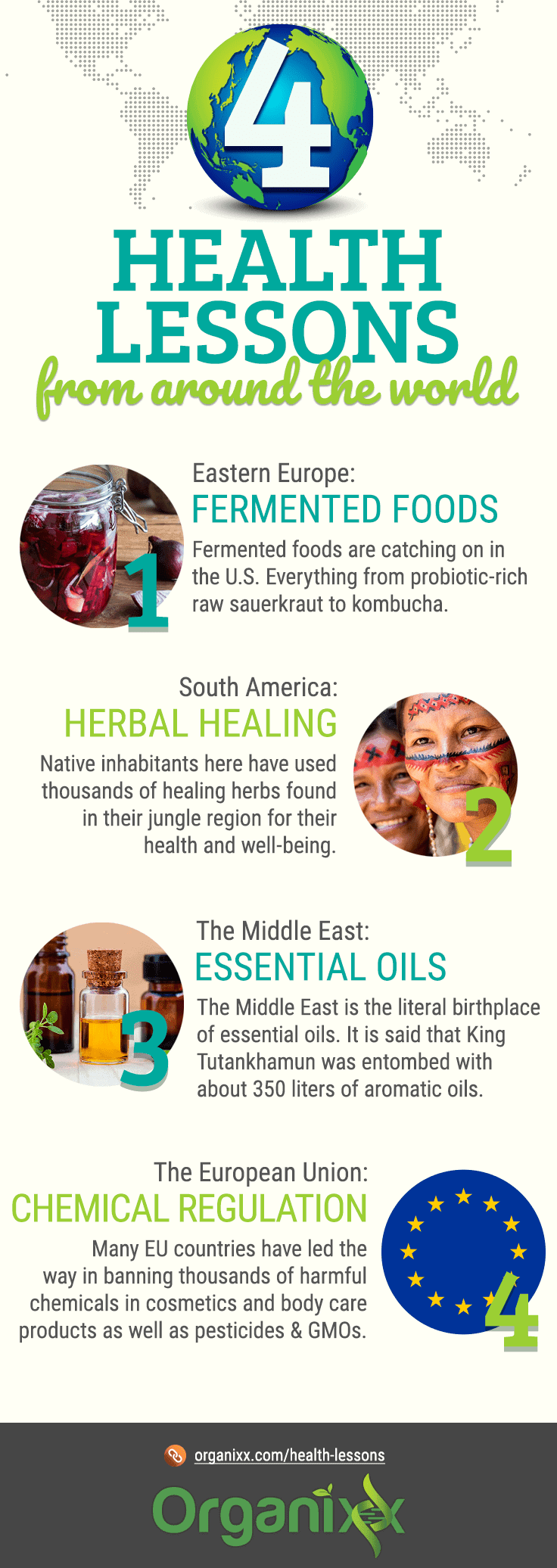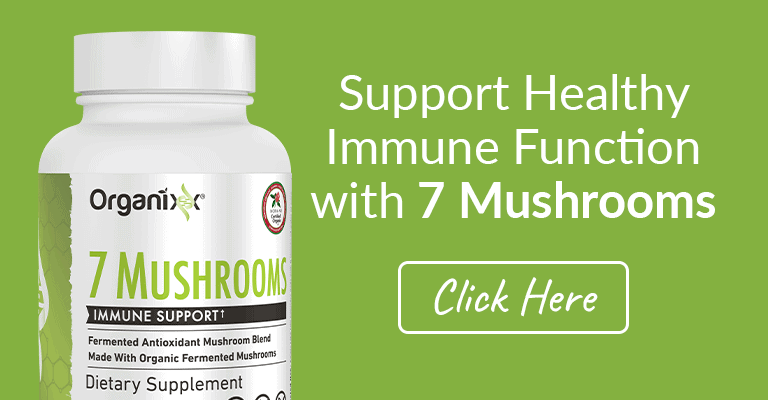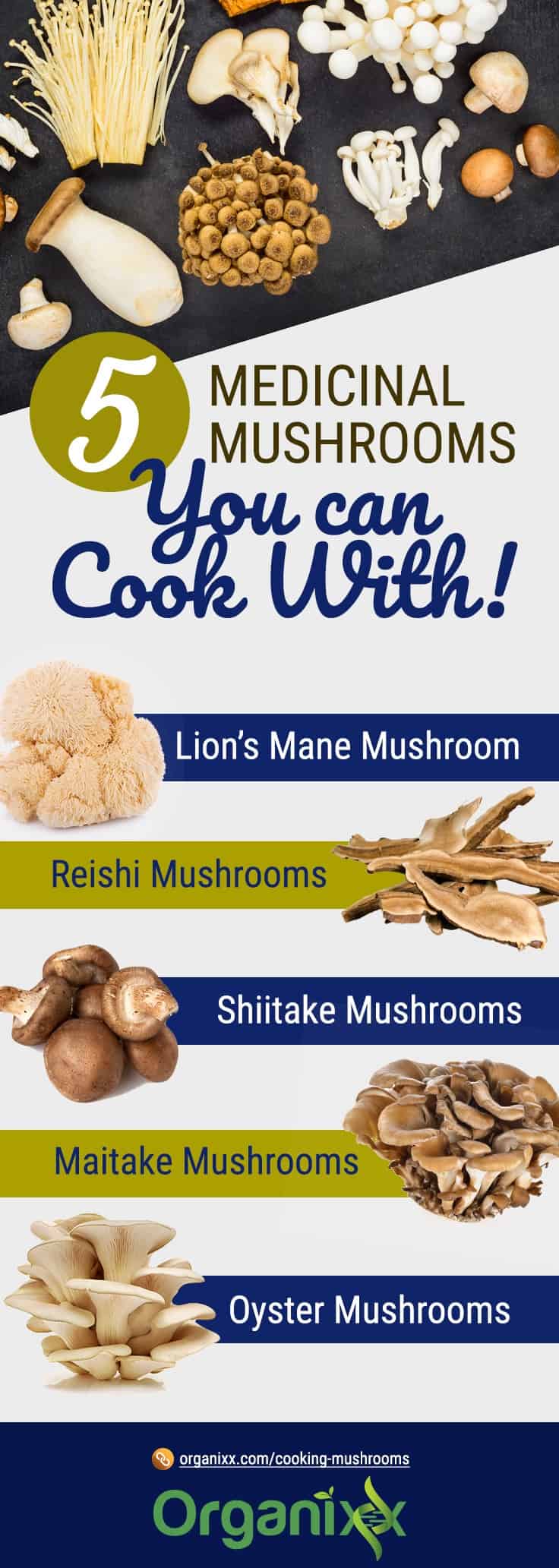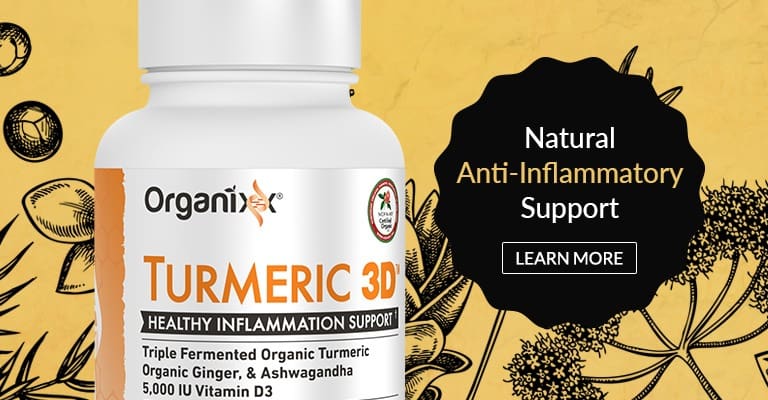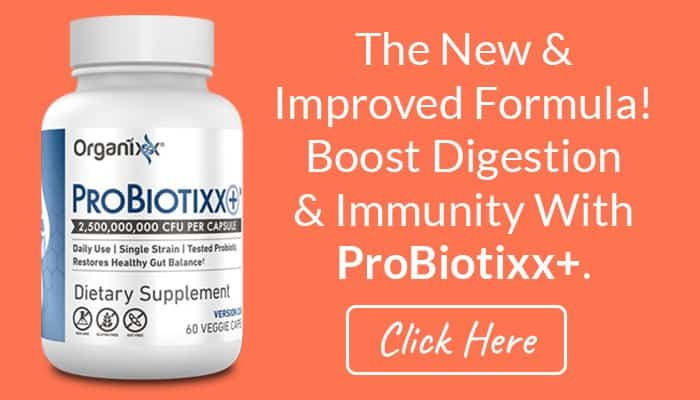If you practice preventative health for yourself and your family, you have probably heard terms such as “Traditional Chinese Medicine” or “Ayurveda,” the 5,000-year-old system of medicine from India. And you may even be taking turmeric, an Indian spice, or adaptogenic mushrooms from Asia for everything from helping to reduce stress to calming the common cold.
But did you know that we in the West borrow potential healing protocols, practices, and substances from all over the world, not just India and China? Here is just a sampling of the health wisdom that Americans have adapted, as well as one practice we absolutely need to adapt, from the four corners of the world.
Fermented Foods: From Eastern Europe to the United States
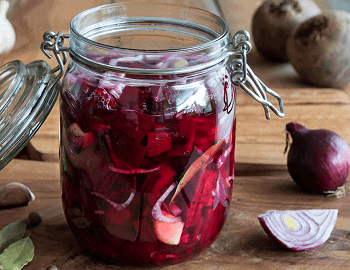 Fermented foods are catching on in the United States, in the form of everything from probiotic-rich raw sauerkraut (found in the refrigerated aisle only) to the now $300 million dollar a year kombucha drink industry.
Fermented foods are catching on in the United States, in the form of everything from probiotic-rich raw sauerkraut (found in the refrigerated aisle only) to the now $300 million dollar a year kombucha drink industry.
In ancient times, Europeans drank beer and wine, which are also created through fermentation. This was during periods when water was unsafe to drink, so it wasn’t a far stretch to incorporate the cultured vegetable later known as sauerkraut into their culinary pantheon.
About 1,000 years ago, sauerkraut was brought to Europe (by Genghis Kahn, as the story goes), where the German people added their signature touch.
In place of rice wine, they cultured their veggies with salt and this is the kind of nutrient and probiotic-rich fermented vegetable that we are most familiar with today. A growing number of proactive Americans are making this version at home or buying it prepared from their local health food store. Fermentation can also add potency to high-quality vitamin supplements.
Kombucha is another trending probiotic substance with somewhat Eastern European roots. Like sauerkraut, kombucha was brought to Europe from Asia, but much later. This drink became popular in European countries in the mid-1800s, as the price of both black tea and sugar decreased for the average person.
In the Northern part of Europe, especially in the Ukraine, populations had been drinking another fermented beverage called kvass (meaning “sour beverage”) for centuries. Instead of turning to beer or wine to avoid getting sick from water contamination, they drank kvass. Kvass was originally made form sourdough or rye bread and was sold from tiny stands on practically every street corner. Later, kvass was made into an even more powerful drink for overall health by replacing the yeast from bread with beets to create “beet kvass.”
Beet kvass is now making headway in the United States and can be made from lemons, currants, raspberries, cherries, and other fruits and vegetables as well as beets.
South America: Herbal Healing Started in the Amazon
 For thousands of years, the native inhabitants of the rain forest areas of Brazil, Peru, Colombia, Venezuela, Ecuador, Bolivia, Guyana, Suriname, and French Guiana have used the thousands of healing substances found in their jungle region for their health and well-being.
For thousands of years, the native inhabitants of the rain forest areas of Brazil, Peru, Colombia, Venezuela, Ecuador, Bolivia, Guyana, Suriname, and French Guiana have used the thousands of healing substances found in their jungle region for their health and well-being.
Many of these substances, of course, found their way west and have become the basis of pharmaceutical drugs. In fact, 25% of the ingredients in modern chemotherapy drugs come from the Amazon rain forest!
Many have discovered, of course, that rainforest plants and herbs in their natural state can prove to be both potentially healing and safe.
Here is just a partial list of healing substances that come from this part of the world:
- Chanca Piedra: said to help with kidney stones and gallstones;
- Stevia: a great natural substitute for sugar and a blood sugar balancer;
- Pau d’arco: coming mainly from Brazil, pau d’arco helps boost the immune system. Studies show it can increase the number of white blood cells in the body;
- Cat’s Claw: an Australian study found that cat’s claw slashed the swelling, pain, and stiffness of arthritis patients by half and gave them more energy;
- Camu camu: one of the highest concentrations of Vitamin C of any plant or herb!
- Sodo: said to help curb addictions;
- Cola de raton (Rat’s Tail): helps with digestion;
- Brazilian Ginseng (Suma): is an overall healing tonic and natural energy-booster;
- Shapumvilla: acts as a coagulant.
…And that is just the tip of the iceberg! The Amazon jungle area produces about 20% of the world’s oxygen and contains roughly 40,000 different named types of plants. To be sure, there are hundreds, and likely thousands, of plant species living there that we don’t even know about.
Sadly, about 17% of the Amazon rainforest – and who knows how many more plant species that may have been beneficial to healing – has been lost to clearcutting over the last 50 years.
The Middle East Leads the Way in Essential Oil Research
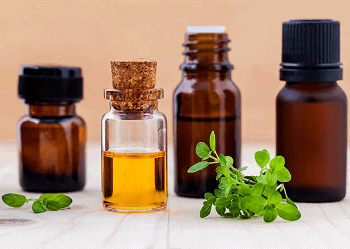 The Middle East is the literal birthplace of essential oils. It is said that King Tutankhamun was entombed with about 350 liters of aromatic oils around him.
The Middle East is the literal birthplace of essential oils. It is said that King Tutankhamun was entombed with about 350 liters of aromatic oils around him.
Indeed, some of the essential oils that helped usher King Tut into the afterlife are the same ones that are referred to in the bible for their healing and purifying properties.
These include frankincense, myrrh, sandalwood, cedarwood, and turmeric.These same substances are also the most studied by science. A quick search on pubmed.com reveals over 500 articles on frankincense, about the same number on myrrh, and a whopping 4,200 studies that have been completed and registered with the U.S. National Institutes of Health to date on turmeric from which turmeric essential oil is derived.
Today, the outdoor markets of countries such as Iran, Egypt, Israel, and the straddling country of Turkey still abound with aromatic herbs and spices — and so do the research labs in these countries as well.
As early as the 1980s, scientists at Cairo University in Egypt were investigating the antimicrobial properties of diffused “olibanum,” another name for frankincense. The very latest studies on the healing effects of curcumin, found in turmeric, are coming out of Middle Eastern universities such as Iran University of Medical Sciences in Tehran. Researchers there are currently studying how turmeric protects the brain against neurotoxins.
And we cannot forget the fact that Israel is now the world’s leader in medical research around cannabis. Medical cannabis and hemp is not usually associated with essential oils. The potency of all essential oils, however, comes in part from the aromatic terpenes that are found in plants.
Today, dozens of top cannabis scientists in Israel and elsewhere follow on the ground-breaking research conducted in the 1990s by chemist Dr. Raphael Mechoulam of Hebrew University. Mechoulam and his team discovered the healing potential of terpenes found in marijuana (of which there are hundreds) and other plants and put them in the spotlight worldwide. His research and others are helping form the foundation for how terpenes and other phytonutrients in aromatic plants like cannabis can help with healing.
The European Union: Setting the Standard for Chemical Regulation
Rounding out our healing tour around the globe, we circle back to Europe and a contribution that the European Union as a whole has made that other governments can do well to adapt – the United States in particular. This contribution to worldwide health that doesn’t really have to do with what the EU has given, but rather the standard they have set for what they will not allow in their countries.
We are talking, of course, about laws passed in certain EU countries that stand up for healthy food and personal care choices. Over the last 10 years or so, many EU countries have led the way in banning thousands of harmful chemicals in cosmetics and body care products as well as pesticides and GMOs found in food.
To highlight just one case amongst hundreds, the U.S. Environmental Protection Agency describes formaldehyde found in housing materials as well as cosmetics as a “potential human carcinogen” and dozens of studies have linked it to a laundry list of conditions, including leukemia.
The U.S. Food and Drug Administration (FDA), however, does not place a restriction on the use of formaldehyde in cosmetics and other sundry products. In contrast, formaldehyde and formaldehyde-releasing agents are currently banned in Sweden and restricted in the European Union as a whole.
In 2015, France further restricted its ban on Genetically Modified Foods. Although not a part of the EU, during that same year, Russia announced its plan to remove all sources of GMOs in food, based largely on their review of French studies into the matter.
To the contrary, GMO foods and other processed “Frankenfoods” are increasingly being incorporated into the U.S. food supply, despite a growing number of outspoken voices who are gathering clear evidence about its dangers to human health. As a consumer be sure to look for organic or Non-GMO certification on the products you purchase. Eating locally and with the seasons are also beneficial practices.
Now that we have been around the world and back, it should be clear that the pursuit of health and wellness really is an international quest that is as old as human culture itself!
The powerhouse trio of herbs in Magi-Complexx Essential Oil provides the strongest, most synergistic healing effect, helping sufferers of arthritis pain, constant muscle aches and pains, neuropathy, systemic inflammation, slowed wound healing, circulatory challenges, as well as skin irritations like eczema, psoriasis, and acne.
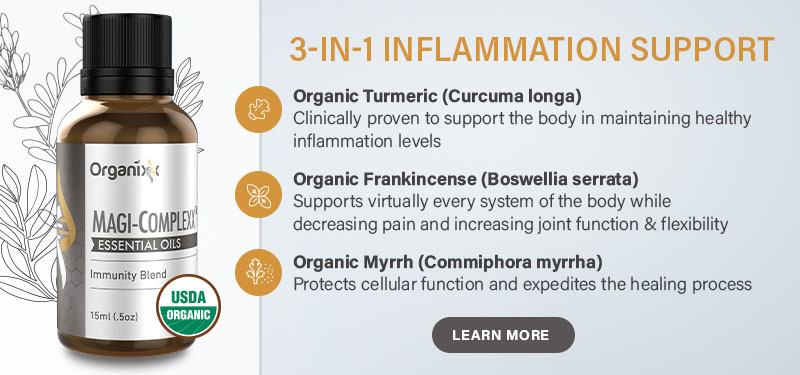
Did you know that you’re likely to find more species of fungi, bacteria, and protozoa in a single scoop of soil than there are all the plants and vertebrate animals in North America? Incredible but true – according to Paul Stamets, the American mycologist, author, and passionate mushroom advocate.
In 1991, an intriguing study suggested that less than 5 percent of all fungal species had been identified. Today, an astonishing 5 million species (including yeasts and molds) are estimated to exist on our planet, while the number of species that have been scientifically identified and classified is still very small.
What’s even more fascinating is that researchers all over the world are presently engaged in studying more than 100 species of mushrooms in order to identify their many health benefits – and they are confirming what many ancient cultures have already known for centuries…
Mushrooms contain some of the most potent beneficial ingredients ever found in nature, which we are now learning can support our health in multiple, powerful ways. For instance, while sun exposure is still the best way to get vitamin D, mushrooms can also be an excellent source of dietary vitamin D if they’re grown and dried in the right way.
Further, not only are they rich in protein, fiber, vitamin C, B vitamins, and various minerals, many species of mushrooms are also chockfull of health-promoting antioxidants such as polyphenols and selenium. Many of them also contain antioxidants that are unique to each species.
Even the mycelia of mushrooms – the thread-like vegetative part that branches through the soil – have been shown to provide additional health benefits. No wonder many traditional cultures were in the habit of preparing and consuming healthful tonics made from mushrooms.
What could be the reason for this longstanding connection between us and mushrooms? It seems that evolutionarily speaking, fungi are closely related to the animal kingdom to which we belong. This may be why many of the naturally-occurring ingredients that help mushrooms defend themselves against their enemies in the wild also support our body’s defense mechanisms.
Indeed, growing evidence indicates that mushrooms may be an important piece of the puzzle when it comes to many of our modern health concerns. Not only in terms of helping to manage health issues, but also supporting the body in such a way that helps to prevent problems from developing in the first place. Not only that, most of these mushrooms also provide us with excellent nutrition.
If you know which ones to pick, the majority of mushrooms are extremely safe. As Paul Stamets writes in the introduction to his book MycoMedicinals: An Informational Treatise on Mushrooms, “What is striking is that most of these mushrooms and their ingredients cause very few side effects – if at all – even at very high doses.”
Given the mounting information on mushrooms and their health-giving qualities, it’s no wonder that they are increasingly being seen as a legitimate way to help boost our health and overall well-being, rather than being seen as an alternative healing option on the fringes of society.
A simple way to take advantage of the many health benefits of mushrooms is to include them in your daily diet – but only after first consulting your healthcare provider, especially if you are already on medications for various health conditions.
Mushrooms in Your Diet – Tips for Buying & Cooking Mushrooms
 Fresh or dried edible mushrooms can be found in grocery stores, health food stores, and local farmers markets.
Fresh or dried edible mushrooms can be found in grocery stores, health food stores, and local farmers markets.
It’s important to buy organically grown mushrooms because they’re very porous and can easily absorb chemicals (including toxins) from the soil they’re grown in.
Before cooking, most mushrooms can be wiped down with a clean, damp cloth to remove dirt. Since mushrooms absorb water easily, they should not be rinsed or washed for too long and should be kept dry in the refrigerator. The quicker they are used, the better.
Each type of mushroom needs to be cooked differently. For instance, dried mushrooms should be rehydrated by combining them with boiling water and letting them sit till they plump up. Large mushrooms like portabellas can be baked, but delicate mushrooms like shiitake and button mushrooms are best sautéed lightly in a pan or wok.
Let’s take a closer look at five of these mushrooms, their reported health benefits, and some tips for how you can include them in your daily diet.
#1. Lion’s Mane Mushroom
Lion’s Mane can be found growing naturally on dying and dead trees in Europe, North America, China, and Japan. This unique, ball-shaped fungus with cascading icicle-like spines or “teeth” – known variously as Lion’s Mane, Hedgehog, Monkey’s Head, and Yamabushitake – enjoys the reputation of being a delicious mushroom with a long history of use in traditional Chinese medicine.
Once reserved solely for royal families, Lion’s Mane is made up of 20% protein and is considered by many food aficionados to be a gourmet dish, with a taste similar to popular and nutritious seafoods such as lobster, shrimp, and crab meat.
Lion’s Mane has recently become the focus of many scientific studies for its ability to support brain health, especially in age-related health conditions such as memory loss. Naturally occurring compounds in this unique mushroom have been shown to support the activity of a peptide known as “nerve growth factor” (NGF), which is necessary for the growth, maintenance, and survival of nerve cells in our brain and nervous system (known as neurons).
Tune in to this video to find out which species of mushrooms are chock-full of health-promoting antioxidants such as… watch till the end to find out!
Being an edible mushroom, a simple way to take advantage of Lion Mane’s health-giving qualities – especially if you’re a fan of seafood – is by cooking it. Being a tough and watery mushroom, however, it needs to be cooked slowly for a long time to get rid of its moisture before it can be consumed.
Food aficionados say that the best way to cook this mushroom is in a covered pan on medium to high heat with a little oil until its “teeth” are brown and the desired level of crispiness has been achieved. Any spices or seasoning and butter should only be added just before the mushroom is ready to eat.
Indeed, Paul Stamets, the well-known author and advocate of supplemental mushrooms, writes, “Lion’s Mane tastes best when caramelized in olive oil, deglazed with sake wine, and then finished with butter to taste.”
#2. Reishi Mushrooms
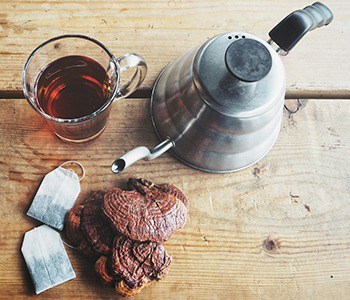 Reishi mushrooms are widely distributed throughout the world, growing mainly on dead and dying deciduous woods.
Reishi mushrooms are widely distributed throughout the world, growing mainly on dead and dying deciduous woods.
Used for its therapeutic properties over 2,000 years by sages and shamans in many traditional cultures, Reishi – also known as Mannentake, Ling Zhi, or Ling Chi – has the formidable reputation of being able to relax and fortify both mind and body. No wonder this fungus holds a very important place in the traditional medical systems of China, Japan, and Korea!
While Reishi mushrooms are traditionally prepared as teas or infusions, modern preparations include capsules, tinctures, and fractionated extracts. Nowadays Reishi is also being added to chocolate bars, candies, energy drinks, and even coffee blends.
In addition, Reishi appears to be a highly beneficial mushroom for health and is being carefully studied to identify its many health benefits. For instance, Reishi helps the body to get rid of toxins more efficiently, counters free radicals, and supports the liver’s metabolic efficiency. Some health experts believe that Reishi may help to counter some of the symptoms of aging and reduce cellular damage associated with oxidative stress in our body.
Reishi also supports the immune system and is routinely given to people to maintain their healthy inflammatory response. Reishi also helps to support blood pressure within a normal range.
Reishi mushrooms can be cooked in different ways:
- Stewing in tea – Reishi tea can be made by first soaking dried Reishi mushrooms in water for at least eight hours, or overnight. In the morning, remove the mushrooms from water. The water should be placed in a clean pot after straining and heated over medium to high heat to the boil for 5-10 minutes. Then allow the tea to cool down and enjoy.
- In soup – another healthy way to prepare Reishi mushrooms is by making them in a soup. Soak the mushrooms overnight. Remove and sauté them in olive oil, salt, and seasoning. Add to the soup of your choice.
- Grilled – Reishi mushrooms can also be grilled. Soak the mushrooms overnight. Remove from water, and place the mushrooms on foil. Add a small amount of olive oil, garlic, and other seasoning. Wrap up the foil and place it on a grill that has been heated to medium-high heat. Cook for five minutes on each side before serving.
#3. Shiitake Mushrooms
Shiitake – also known as Black Forest mushroom – is native to Japan, Korea, and China and is one of the most popular mushrooms around. Both fresh and dried Shiitakes are commonly used ingredients in East Asian cooking.
This exotic fungus, which grows naturally on dead and dying broad-leaf Asian oaks and beeches, is also being studied to understand and exploit its many reported health benefits. For instance, Lentinan, a potent polysaccharide present in Shiitake, has been shown to help improve the quality of life, extend survival, and slow down aging, with very few side effects.
Consuming Shiitake has also been shown to stimulate the immune system, including gut immunity, and support the body’s healthy inflammatory response.
Shiitake mushrooms also have antiviral, antibacterial, and antifungal qualities. Uniquely for a plant, they contain all eight essential amino acids along with a type of essential fatty acid called linoleic acid.
Fortunately for us, Shiitake mushrooms are considered to be earthily delicious when cooked properly. They can be added to many types of dishes, from breakfast to soups, appetizers, and entrees.
Some suggestions for including Shiitake in your diet include:
- With eggs – Shiitake mushrooms should first be sautéed lightly in olive oil or butter until softened and gently caramelized. They can then be added to scrambled eggs made according to your preference, using fresh herbs and seasonings of your choice.
- In soup – crispy, lightly fried shiitake mushrooms make the perfect topping for soups, especially creamy squash-based soups in which their earthy flavor offers a counterpoint to the sweet squash.
- With salmon – Shiitake mushrooms can be combined with fresh salmon in many delicious ways – such as smoked salmon and sautéed shiitake on toast; Shiitake mushrooms cooked down into a sauce and poured over salmon; marinating the mushrooms and salmon together in a soy-based sauce before grilling; and making a miso soup with noodles, salmon, shiitakes, and mixed greens.
- As pizza topping – Lightly sautéed shiitake mushrooms can be substituted for regular button mushrooms as topping for homemade pizzas and served along with cheeses and fresh herbs like basil, parsley, chervil, or cilantro.
#4. Maitake Mushrooms
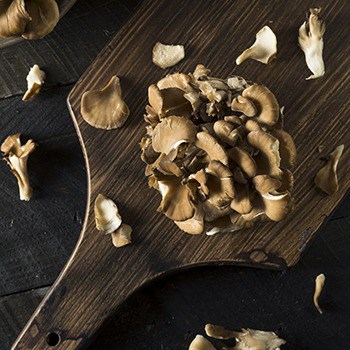 Maitake mushrooms – also known as Hen of the Woods and the Dancing Mushroom – typically grow in northern temperate, deciduous hardwood forests in the U.S., Canada, Japan, China, and Europe where they have been used both as food and in various tonics for their health-giving qualities.
Maitake mushrooms – also known as Hen of the Woods and the Dancing Mushroom – typically grow in northern temperate, deciduous hardwood forests in the U.S., Canada, Japan, China, and Europe where they have been used both as food and in various tonics for their health-giving qualities.
Maitake mushrooms are known to be rich in vitamins. Additionally, laboratory studies and small-scale clinical studies in people have shown that they can help stimulate specific cellular components of the immune system, along with helping to manage blood sugar levels, and balancing hormone levels.
Because they are large and feathery, Maitake mushrooms must be chopped or cut into manageable pieces before sautéing, grilling, searing, or adding to a sauce or soup. Like Shiitakes, lightly sautéed maitake mushrooms can be used as topping with cheeses and fresh herbs for homemade pizzas or used to make miso soup with noodles and mixed greens.
#5. Oyster Mushrooms
Oyster mushrooms are found in every temperate and tropical forest all over the world, growing on dead and decaying broad-leaf hardwood trees. Along with button or Cremini mushrooms, porcinis, portabellas, and morels, they are extensively used as food because they are rich in nutrients, minerals, and antioxidant compounds.
Laboratory studies show that oyster mushrooms have antifungal activity and help to lower levels of fats in the blood. Further, studies in both mice and humans show that oyster mushrooms help to lower blood sugar levels and increase insulin levels.
Oyster mushrooms have also been reported to support joint health and reduce muscle aches. They are reported to promote heart health, able to help strengthen blood vessel walls and lower risk for heart attack or a stroke. They are also believed to help correct iron deficiencies, especially in people who don’t eat much meat or who eat no meat at all.
Like oyster mushrooms, ordinary button or Cremini mushrooms, porcinis, portabellas, and morels are also full of protein, minerals, and vitamins including copper, potassium, selenium, phosphorus, and zinc, niacin (vitamin B3), and pantothenic acid (vitamin B5).
A WORD OF CAUTION: Obviously if you have an allergy or sensitivity to mushrooms, then they should NOT be part of your diet. Because mushrooms are so potent, it is also advisable to check with a qualified healthcare practitioner before consuming foods or supplements made with mushrooms as they can potentially impact different types of medication and health conditions.
7 Mushrooms from Organixx contains 7 of nature’s most powerful mushrooms for anti-aging, longevity, and immune support. Using centuries-old knowledge of the power of nutritional mushrooms and our breakthrough new formulation process we’ve unleashed the power of mushrooms in a way never before done.
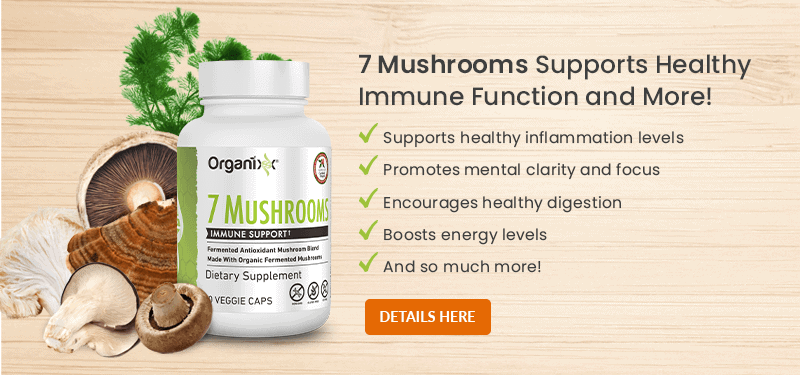
Here’s a promising health fact: Americans are spending more money on organic and natural foods than ever before. According to the Organic Trade Association, the U.S. market for organic products had a record year in 2018, breaking the $50 billion mark for the first time.
As consumers demand more natural ingredients in the products they’re buying – including processed foods – the food industry is taking notice in all kinds of interesting ways. This includes using food-grade essential oils instead of toxic chemical agents for both flavoring and preservation.
Unfortunately, the food industry cuts corners just like many other industries. After all, the bottom line is critical for many corporations’ success.
So, how do you know if the “natural flavoring” used in your favorite ice cream, cookie, pasta sauce, or pickle comes from food-grade essential oils or some chemical concoction? And do the health benefits of essential oils such as citrus varieties, lavender, rosemary, and basil stay intact even after heating or baking?
Let’s dive into the little-known yet emerging world of food-grade essential oils…
Using Food Grade Essential Oils for Flavor
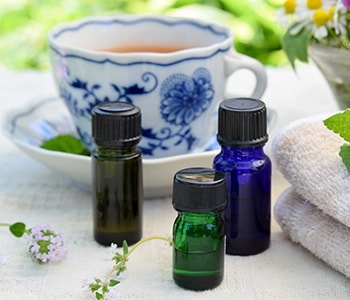 There are two basic ways that essential oils can be used in commercially produced foods.
There are two basic ways that essential oils can be used in commercially produced foods.
One way, of course, is for flavor. The types of food that could potentially use essential oils in this way are endless.
A few examples include:
- Pudding
- Flavored gelatins
- Pastries
- Chewing Gum
- Sauces
- Salad dressings
- Herbal and flavor-infused teas
- Ice cream
Even “all-natural” toothpaste and mouthwash are often flavored with essential oil ingredients such as myrrh, fennel, clove, or peppermint. (You can find a DIY toothpaste recipe here.)
Companies that go the natural route of using food-grade essential oils for flavor can combine the terpenes (compounds) of certain oils together to get some very interesting flavor combinations. For example, the terpenes linalool and linalyl acetate, the main fragrant compounds in bergamot, exhibit a lavender-like flavor. Linalyl acetate alone, on the other hand, has a sweet flavor that is similar to a pear.
How Essential Oils Are Used as Preservatives
Essential oils are also used as natural preservatives in lieu of chemical-derived preservatives that, as we all know, have been linked to cancer and other detrimental health conditions. Sodium nitrate, anyone?
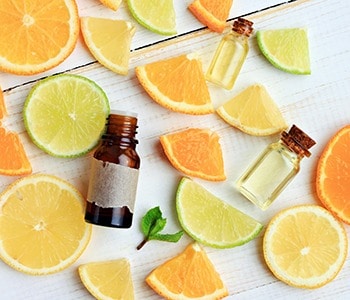
Hands down, citrus oils have the best track record when it comes to food preservation because of their anti-fungal and anti-bacterial properties.
Lime, lemon, grapefruit, and bergamot oils contain high amounts of volatile compounds and have been used worldwide for centuries.
Studies on lemon oil have shown that it is effective at eliminating E. coli. Orange oil has been proven to help eradicate Salmonella concentrations in skim milk (at a maximum concentration of 1000 microliters of orange oil per liter of skim milk).
The “heat factor” of essential oils affects their ability to act as a natural preservative as well. Advocates of a more natural approach to preservation in commercial food manufacturing are exploring creative ways to use essential oils for this purpose.
“Citrus essential oils contain more than 85% volatile compounds, which can be lost at room temperature or above,” says nutritional researcher Nazik Mustafa, writing for the University of Sharjah (Sudan) in a 2015 report.
“The antimicrobial properties of CEOs [citrus essential oils] are attributed more to these volatile compounds; hence, there is a need to combine their use in food preservation with improved packaging materials and techniques. Vacuum-packed foods, canned foods, and bottled juices could be the first food commodities in which EOs are used commercially.”
Other researchers are focusing on extracts derived from more savory essential oils such as rosemary. For example, companies in Morocco have begun to extract two substances in rosemary to make all-natural meat preservatives. Rosmarinic acid and carnosic acid found in rosemary can be combined to inhibit the free-radical chain reaction that leads to spoilage in fats, oils, and meats.
What’s more, when these two substances are extracted, they do not produce the characteristic “rosemary” smell or flavor; only the antioxidant effects remain.
Finally, some studies have looked at the possibility of using “nano-encapsulating” essential oils to retain their anti-fungal properties in above-room-temperature conditions.
Do Essential Oils Retain Their Properties in High Heat?
What happens to the health-supporting benefits of essential oils when they’ve been heated? For example, will lemon oil keep its proven anti-inflammatory properties after it has been heated up and swirled into a cream pie?
Generally speaking, most essential oils cannot maintain their basic qualities in temperatures above room temperature. So while you may still have the lemon flavor associated with that pie, the actual essential oil, if it has been heated, will probably no longer have the potential healing properties usually associated with it.
What Does “Natural Flavor” Really Mean?
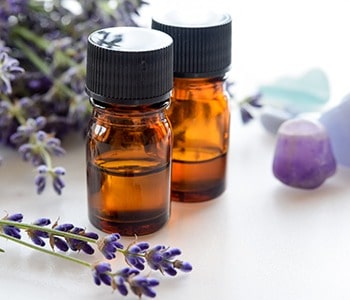 According to the FDA, as of April 2017, food-grade essential oils as well as “solvent-free oleoresins, natural extractives and distillates” that are derived from a “spice, fruit or fruit juice, vegetable or vegetable juice, edible yeast, herb, bark, bud, root, leaf or similar plant material” are legally categorized as part of the “natural flavor” or “natural flavoring” cadre when they are used in foods.
According to the FDA, as of April 2017, food-grade essential oils as well as “solvent-free oleoresins, natural extractives and distillates” that are derived from a “spice, fruit or fruit juice, vegetable or vegetable juice, edible yeast, herb, bark, bud, root, leaf or similar plant material” are legally categorized as part of the “natural flavor” or “natural flavoring” cadre when they are used in foods.
There are dozens of individual essential oils that are approved to put into food, including some well-known oils such as cinnamon and fennel, and some lesser-known ones like hickory bark and horehound.
What these designations mean for you is that if you see these terms on back-of-the-packaging ingredient listings, the flavoring could potentially have come from an essential oil. Then again, it might not, as food manufacturers don’t need to be specific in their labeling.
Chemicals That Food Manufacturers May Be Adding to Food-Grade Essential Oils
According to U.S. Food & Drug Administration (FDA) standards, approved essential oils have officially been designated as “generally recognized as safe (GRAS).” However, this does not mean that chemicals cannot be added to the oil before being included in a product.
According to the FDA’s current Food Additive Status List, chemicals that are typically added to essential oils used for commercial food products include:
- Dilauryl thiodipropionate
- Propyl gallate
- BHT (butylated hydroxytoluene)
- BHA (butylated hydroxyanisole)
- Arabinogalactan
It should also be noted that many countries such as the U.K., Japan (since 1958), Romania, Sweden, and Australia have bans against BHT in food. In the United States, it is still allowed to be added to many food ingredients, including essential oils.
An increasing number of American companies are phasing BHT out in response to consumer pressure, although many are simply switching to BHA, which can be just as dangerous.
BHT is a known endocrine disruptor, can cause organ toxicity, and may be a neurotoxin. The U.S. Department of Health and Human Services’ National Toxicology Program published a report in 2011 that categorized BHA as a chemical that “is reasonably anticipated to be a human carcinogen.”
Two Ways to Ensure Your Food Has the Safest Essential Oil Ingredients
If you really want to know what a certain company means by “natural flavoring” in a certain product, give them a call or send them an email directly and ask them.
If they choose not to answer your question, you do not need their product in your cupboard! It is a consumer’s market. This means that YOU have the upper hand. Ingredients matter and you have a right to know what specifically is in the “natural flavorings” you are ingesting!
And if you choose to use essential oils in your own recipes, remember these two words: supplement grade. This demarcation will ensure that the essential oils you use for recipes at home do not contain any harmful additives and are safe. Don’t settle for anything less than this categorization when you are preparing food with essential oils.
Cooking with Essential Oils
Why not give using essential oils in cooking a try? Here is a simple salad dressing recipe to get you started!
Lemon Vinaigrette Recipe
- 4 T red wine vinegar
- 4 T balsamic vinegar
- 2 T raw, organic honey (or a few drops of liquid stevia)
- 1 clove garlic, finely chopped
- 1 cup organic extra virgin olive oil
- Salt to taste
- Pepper to taste
- 4 drops Organixx Lemon essential oil
Combine all ingredients and shake vigorously in an airtight glass dressing container. Then serve on your favorite salad greens!
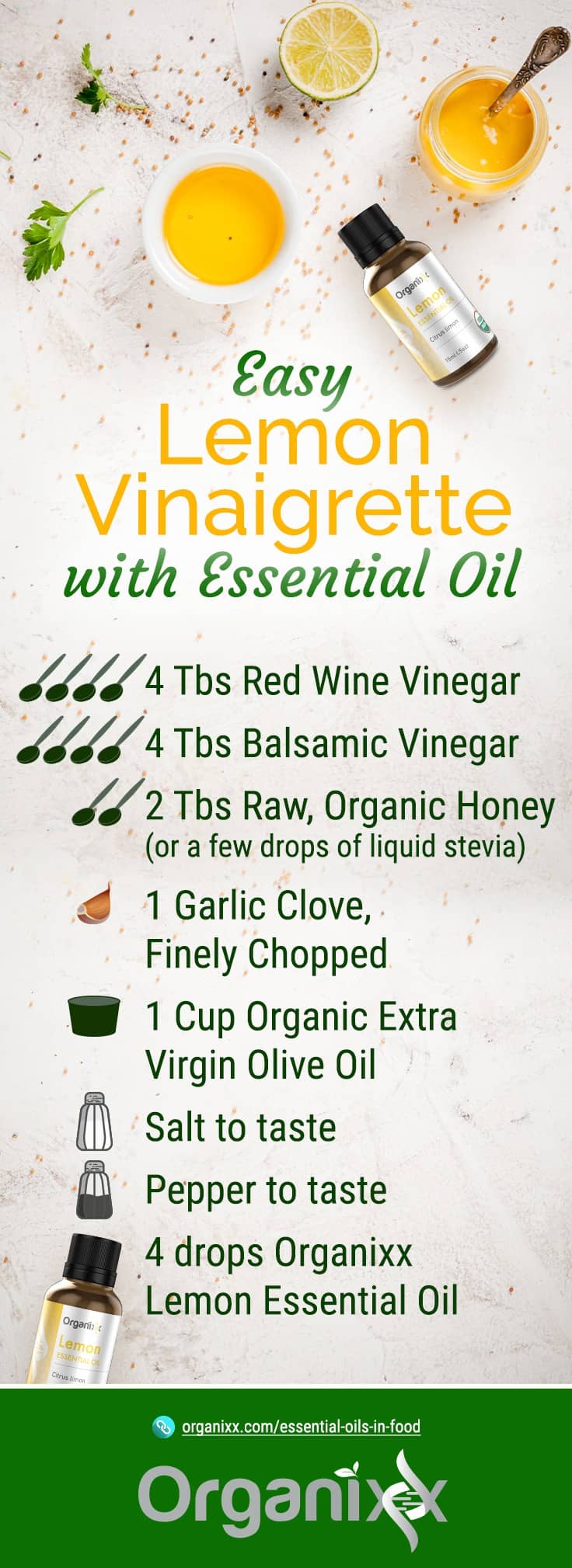
The powerhouse trio of herbs in Magi-Complexx Essential Oil provides the strongest, most synergistic healing effect, helping sufferers of arthritis pain, constant muscle aches and pains, neuropathy, systemic inflammation, slowed wound healing, circulatory challenges, as well as skin irritations like eczema, psoriasis, and acne.

Turmeric (known scientifically as Curcuma longa) is an earthy root spice belonging to the ginger family. Believed to have been originally cultivated in India and Indonesia, turmeric is widely used for cooking, dyeing fabrics, and cosmetics. Turmeric is very popular at the moment for its potent health-giving benefits… but turmeric’s use actually dates back centuries.
Indeed, turmeric has long been used in Ayurveda, the traditional Indian system of medicine. Some of the traditional uses of turmeric in Ayurveda include:
- Helping to maintain healthy levels of gut bacteria
- Protecting against stomach disorders
- Helping to cleanse the liver and increase the flow of bile, necessary for breaking down dietary fats during digestion
- Helping to manage blood sugar
- Helping to support a body plagued with arthritis inflammation and pain.
Turmeric and Skin: Ayurveda’s Traditional Uses
According to the ancient Ayurvedic text the Charaka Samhita, turmeric’s ability to manage inflammation levels in the body is the reason why it benefits so many health conditions – including those affecting the skin.
For example, the juice of turmeric was used to help heal wounds, bruises, and leech bites. A paste made of turmeric alone or with neem leaves was used to treat ringworm, itching, eczema, and many other parasitic skin conditions.
Hemorrhoids (piles) were treated by Ayurvedic healers with an ointment of turmeric, hemp leaves, onions, and warm mustard oil or linseed oil, applied externally.
Pastes of turmeric were used to relieve skin itching and ulcers during infections of smallpox, chickenpox, and shingles, and also to treat various skin blemishes.
Ayurveda and Skin
Turmeric has long been used by traditional Ayurvedic healers to treat skin conditions in the form of creams, lotions, pastes, and ointments. However it’s not just the traditionalists who believe in turmeric’s effectiveness for treating skin conditions. Modern scientific and clinical evidence indicates that turmeric can potentially be effective with:
- reversing some of the skin damage caused by the sun and UV light (known as photoaging)
- protecting against skin itching or pruritus
- reducing the severity of the damage caused by radiation therapy (radiation dermatitis)
- helping to manage psoriasis
- helping to prevent fungal skin conditions
5 Ways Turmeric Has Scientifically Been Shown to Improve Skin
Let’s take a closer look at 5 reported beneficial applications for turmeric and skin…
#1. Reversing Facial Photoaging
 Photoaging is a term used to describe premature aging of the skin caused by repeated exposure to ultraviolet radiation (UV) – mainly from the sun, but also from artificial UV sources.
Photoaging is a term used to describe premature aging of the skin caused by repeated exposure to ultraviolet radiation (UV) – mainly from the sun, but also from artificial UV sources.
Photoaged skin typically shows areas of greater pigmentation and becomes thin and easily damaged.
A randomized, placebo-controlled, double-blind study conducted in 2007 evaluated the efficacy of Tricutan – a herbal combination gel containing turmeric, rosemary, and gotu kola – in improving skin firmness and elasticity and improving the signs of photoaging in 25 women aged between 34 to 67 years.
Rosemary is believed to moisturize skin, support healthy collagen development, and counter skin-damaging free radicals. Gotu kola, also known as Indian pennywort, has long been used to heal wounds and treat skin conditions such as leprosy and psoriasis for thousands of years in India, China, and Indonesia.
The results of this 4-week study showed that treatment with Tricutan gel improved skin firmness and clinical evaluation in the women being tested. Further, according to their self-evaluation, the participants felt that Tricutan gel gave significantly better results than the control.
Unfortunately, a major limitation of this study is that the potential benefits of turmeric cannot be separated from those potentially caused by rosemary and gotu kola.
However, curcumin (one of the main active compounds in turmeric) has been shown to block an enzyme in our body known as phosphorylase kinase, with beneficial effects for many skin conditions including burns and photoaging. For instance, a 2013 study showed that curcumin gel helps to heal burns rapidly, with little or no residual scarring.
Additionally, the gel also helped to reverse many of the adverse changes seen in photo-damaged skin, suggesting that curcumin could be used as an effective, natural, and non-toxic ingredient in sunscreen creams and lotions.
#2. Protection Against Itching
Pruritus is the scientific term used to describe severe itching, which can happen because of many underlying causes. For instance, uremic pruritus is caused by chronic kidney disease. Uremia means having excessive urea in the blood, which occurs when both kidneys stop working – which is known as renal failure.
In a randomized, double-blind, placebo-controlled study conducted in 2014, 100 dialysis subjects with uremic pruritus were given either three turmeric capsules daily or control starch capsules for 8 weeks. At the end of the study, the researchers found that dialysis subjects in the curcumin group experienced significantly less itching relative to subjects in the control group.
Simultaneously, they also found that curcumin significantly reduced the levels of high-sensitivity C-reactive protein (known scientifically as hs-CRP), a well-known marker of inflammation.
 Exposure to sulphur mustard severely damages the skin, typically leading to severe pruritus. In a 2012 study, 96 male subjects with sulfur mustard-induced pruritus were given either one gram of curcumin or placebo capsules daily for 4 weeks, while being constantly evaluated for pruritus severity using three different assessment methods.
Exposure to sulphur mustard severely damages the skin, typically leading to severe pruritus. In a 2012 study, 96 male subjects with sulfur mustard-induced pruritus were given either one gram of curcumin or placebo capsules daily for 4 weeks, while being constantly evaluated for pruritus severity using three different assessment methods.
At the end of the study, the researchers reported that the curcumin group showed a significant reduction in pruritus severity, as measured by all three methods of assessment.
Further, the levels of substance P, a strong stimulator of pruritus, was seen to be significantly reduced in the curcumin group compared with the placebo group. At the same time, the innate antioxidant enzymes superoxide dismutase, glutathione peroxidase, and catalase were seen to be higher in the curcumin group relative to placebo.
In other words, turmeric consumption increased levels of natural antioxidant enzyme systems.
Similarly, another 2012 study looked at the effects of curcumin on various inflammatory markers in the blood of 96 male Iranian war veterans suffering from chronic sulphur mustard-induced pruritic skin lesions.
These men were randomly given either one gram of curcumin or control daily for four weeks. At the end of the study, inflammatory markers such as interleukin-8 (known scientifically as IL-8 and an important component of the immune system) and high-sensitivity C-reactive protein (hs-CRP) were significantly lower in the group being treated with curcumin, suggesting that curcumin can reduce sulphur mustard-induced pruritic complications – and likely other forms of pruritus – by helping to support healthy inflammation levels.
#3. Reducing Severity of Radiation Dermatitis
Radiation therapy is a widely accepted form of conventional medical treatment. Unfortunately, it causes severe side effects and can reduce both quality of life and long-term survival.
One very common side effect of radiation therapy is dermatitis, also known as eczema – which is typically characterized by itchiness, red skin, and a rash, usually on very specific areas of the skin and sometimes over the entire body.
Up to 85 percent of all patients undergoing radiation therapy are likely to experience moderate to severe skin reactions within a few days to weeks, which increase after 2 to 3 weeks and continue to build up as radiation therapy goes on.
Radiation dermatitis (also known as radiodermatitis, x-ray dermatitis, radiation skin damage, or a radiation burn) varies in severity from person to person. Symptoms such as dry skin, itching, discomfort, pain, warmth, and burning have been reported for up to 4 weeks after radiation treatment has ended.
Redness of the skin or mucous membranes caused by greater blood flow in delicate blood vessels just under the skin known as capillaries has also been known to happen. Management of radiation dermatitis is crucial, as this can help to improve the therapeutic benefits of radiation therapy, prevent infections, and reduce skin injury and scarring.
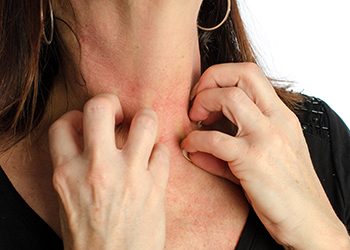
Currently there is no effective standard treatment to prevent or treat radiation skin dermatitis.
Promisingly, the curcumin in turmeric has been shown to be helpful in various skin conditions, including radiation dermatitis.
For instance, in 2013, a randomized, double-blind, placebo-controlled clinical study was conducted in 30 patients to assess the ability of curcumin to manage radiation dermatitis. Randomized patients were given either 2 grams of curcumin or control orally in capsule form three times daily – in other words, a total of 6 grams every day – throughout the course of radiation therapy, which lasted between 16 to 33 sessions.
At the end of the study, the researchers concluded that orally given curcumin significantly reduced severity of radiation dermatitis and a condition known as moist desquamation after radiation therapy.
Moist desquamation is a skin condition that happens as a consequence of radiation exposure in which the skin thins and begins to weep, or ooze liquid, because of a weakening of skin structure.
The study researchers further stated that “it is possible that a higher oral dose of curcumin, such as ≥8.0 grams daily, may be more effective against radiation dermatitis severity including erythema and skin reactions.”
In 2014, another study was undertaken jointly at Father Muller Medical College in Mangalore, India, and the University of South Carolina in Columbia, SC, to assess the effectiveness of a popular, commercially available herbal-based skin cream for preventing severe dermatitis in patients requiring radiation therapy. This cream contains turmeric and sandalwood oil and has been used in India for over 40 years to enhance the complexion and rejuvenate the skin.
As radiation therapy proceeded, signs of skin damage began to appear in the third week. Roughly 20 percent of the volunteers in the control group and 8 percent of the patients in the cream-treated group developed dermatitis.
Continuation of radiation treatment into the fourth week increased the incidence of dermatitis to 75 percent for the control group and only 37.5 percent in the cream-treated group – a statistically significant difference.
Both incidence of dermatitis and the degree increased in both groups in subsequent weeks, reaching a peak at week 7.
However, a direct comparison showed that patients using the turmeric and sandalwood cream had a significantly delayed appearance and reduced levels of dermatitis at all time points during radiation therapy.
While these initial studies are very promising, larger clinical trials are needed to assess the extent of turmeric’s effectiveness in helping to manage radiation dermatitis.
#4. Management of Psoriasis
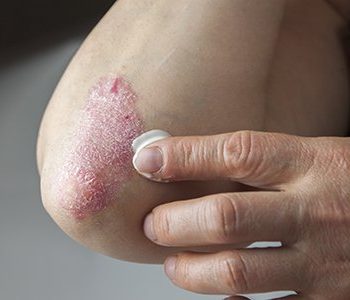 Psoriasis is a persistent yet unpredictable skin disorder in which skin cells grow up to 10 times faster than normal.
Psoriasis is a persistent yet unpredictable skin disorder in which skin cells grow up to 10 times faster than normal.
As underlying cells reach the skin’s surface and die, their sheer numbers lead to raised, red plaques covered with white scales – typically seen on the knees, elbows, and scalp, although it can also affect the torso, palms, and soles of the feet.
Plaque psoriasis, the most common form of this condition, includes symptoms such as red skin, often covered with loose, silver-colored scales. These lesions may be itchy and painful, and sometimes they also crack and bleed.
In laboratory studies, turmeric has been shown to block many of the inflammatory enzymes involved in triggering psoriasis.
In a randomized, prospective placebo-controlled, double-blind clinical trial conducted in 2015, the efficacy and safety of an externally applied turmeric microemulgel was assessed on 34 patients suffering from mild to moderate plaque psoriasis.
The results of this study show that the clinical and quality of life parameters in patients treated with the turmeric microemulgel were significantly better relative to patients with untreated lesions. Further, observed side effects of treatment were trivial.
These results appear to indicate that gels and creams containing turmeric may be an effective and safe way of helping to manage psoriasis symptoms.
#5. Helping to Stop Fungal Skin Conditions
Turmeric is widely used in Thai traditional medicine for treating rash, itching, ringworm, athlete’s foot, and jock itch. Previous studies have reported that turmeric oil as well as multiple curcuminoid compounds are effective against various species of dermatophytes, a type of fungus that causes skin diseases.
For instance, in a 2013 study, two turmeric creams containing 6 and 10 percent turmeric oil were tested against various types of dermatophytes. Ar-turmerone, a potent compound present in turmeric oil, was seen to be effective against dermatophytes, although further studies are needed to assess the safety and stability of this compound.
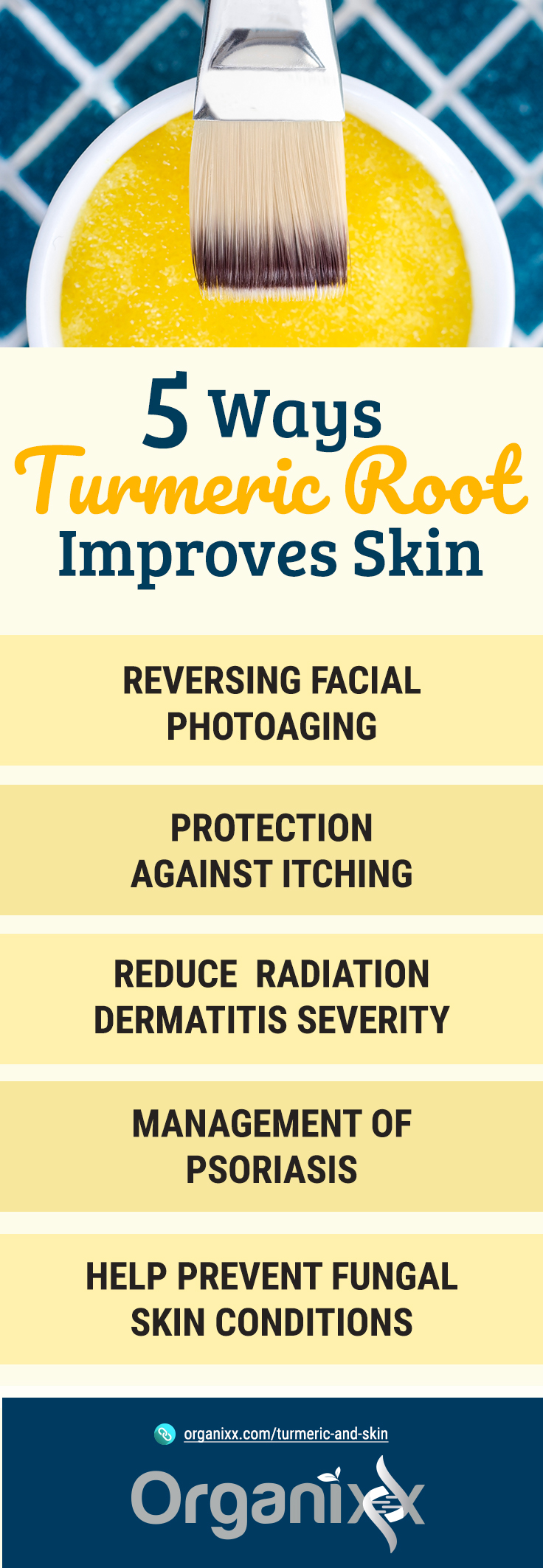
Potential Adverse Effects and Contraindications of Curcumin & Turmeric
With all the buzz about turmeric and its active compound curcumin, how safe is turmeric root considered to be?
Turmeric is considered extremely safe, especially when used in whole food form and as a spice for cooking. This is obvious from the fact that nearly all Indians and many other South Asians routinely use significant amounts of turmeric in their daily cooking for their entire lives without any reported adverse effects.
However, more care is likely needed when consuming fresh turmeric juice, turmeric essential oil, tinctures, and other therapeutic formulations containing turmeric, as well as turmeric supplements. This is because the dose of turmeric – and its various powerful active ingredients, including curcumin – can vary significantly in these preparations.
It has been reported that curcumin did not show any toxicity in doses as high as 8 grams daily for 3 months in a human clinical trial, making it a very safe and attractive supplement to support healthy inflammation levels.
In fact, there were no significant toxicities of curcumin reported from almost 40 clinical trials involving over 800 participants.
That being said, it must be noted that some clinical studies have shown isolated and transient rises in liver enzymes and anticoagulant properties with turmeric because of suppression of platelet aggregation.
With doses higher than 4 grams daily, isolated cases of gastrointestinal side effects have also been reported – including loose stools, acid reflux, bloating, and abdominal discomfort.
However, in a 2013 study of 26 patients given 2.35 grams of curcumin daily for 14 days, no serious adverse events attributable to curcumin and no changes in overall activity or general health were reported.
Patients in the study actually self-reported a decrease in gut-related disturbances including nausea, vomiting, constipation, diarrhea, flatulence, and abdominal pain following two weeks of daily curcumin intake. This suggests that curcumin may be beneficial for these conditions, rather than causing them.
In some instances, curcumin has been shown to stimulate gallbladder contractions, worsening symptoms in patients with gallstones. Further, curcumin has been shown to prevent the synthesis of Hepcidin, a protein involved in iron balance in the body. Perhaps as a result, curcumin has been shown to cause a dose-dependent drop in hematocrit, hemoglobin, and blood iron levels in people with an underlying subclinical iron deficiency or anemia.
Therefore, some health experts recommend that curcumin should be taken with caution by people with low iron stores in their body, or other diseases associated with iron such as anemia.
In conclusion, while most of the currently available research indicates that turmeric and its many active ingredients are extremely safe, it is recommended that you take fresh turmeric juice, turmeric oil, tinctures, and other therapeutic formulations containing turmeric, as well as turmeric supplements, under the supervision of a qualified healthcare provider.
Turmeric 3D from Organixx provides you one of the most “bioavailable” forms of turmeric due to its unique fermentation process. This means your body experiences the maximum benefits of the purest, most potent turmeric available!
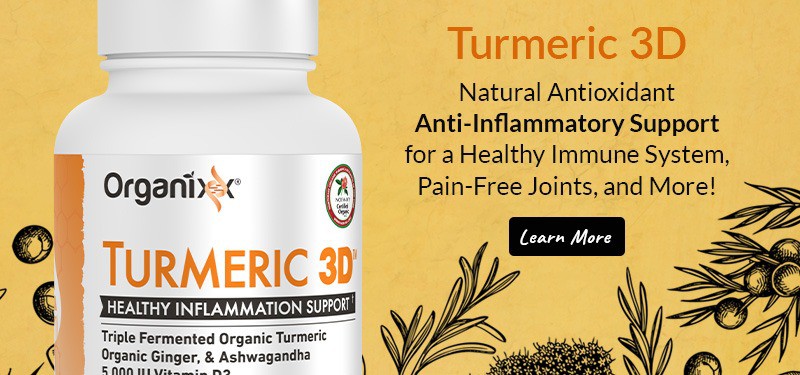
What is the perfect healthy poop? “An ideal stool looks like a torpedo – it should be large, soft, fluffy and easy to pass,” says Dr. Foxx-Orenstein, the president of the American College of Gastroenterology, on the site StoolAnalyzer (we’ll go more in-depth about what this site is and how it can help you a little later).
Let’s face it: bowel movements aren’t the most popular topic and chances are you aren’t chatting about your bathroom habits with friends and neighbors. And yet there are an increasing number of researchers who have chosen to study poop and it’s importance to overall health. Why?
Science is discovering that when it comes to not just your digestive system, but pretty much the whole shebang called your body, the characteristics of your stool and your daily elimination habits can be MAJOR INDICATORS for disease risk – both now and down the road.
Knowing what to look for in your bowel movements can put YOU in the “driver’s seat” about what you may need to change – including adding vital probiotics to your diet – to turn your pooped-out, stressed-out, and burnt-out body into one that is energized and “in the flow”… in more ways than one!
The Scary Statistics: Young People Feeling the Strain
 Here’s a reality: Americans aren’t healthy when it comes to their colons. How can we say this? Because of the sad new statistics concerning colorectal cancer amongst young people.
Here’s a reality: Americans aren’t healthy when it comes to their colons. How can we say this? Because of the sad new statistics concerning colorectal cancer amongst young people.
A 2017 study published in the Journal of the National Cancer Institute found that although rates for colon and rectal cancer have been dropping in recent years overall, this mostly reflects the situation for older people. When the study looked at adults ages 20 to 49, they found that those born in 1990 have double the colon cancer risk and quadruple the risk for rectal cancer compared with people born in or around 1950.
In 2017, an estimated 135,500 people will be diagnosed with colorectal cancer and about 50,200 individuals will die from the disease. The majority of these cancer deaths will be people under the age of 50.
“Trends in young people are a bellwether for the future disease burden,” says Rebecca Siegel, MPH, Strategic Director of Surveillance Information Services in the Intramural Research Department at the American Cancer Society. “Our finding that colorectal cancer risk for millennials has escalated back to the level of those born in the late 1800s is very sobering.”
When It Comes to Health, It Really IS a “Gut Feeling”
Of course, young people aren’t the only ones who have to worry about keeping channels of elimination clean and clear. We all do.
This is because gut health (including how healthy your stool is) is directly related to immune system health. As you may already know, the immune system is the first line of defense against pathogens and about 70% of the immune system is located in the gut area. Gut-Associated Lymphoid Tissue or GALT (part of another system called MALT, Mucosal-Associated Lympoid Tissue) is where most of your immune system cells come from.
According to a 2008 Italian investigation that focused on the connection between the gastrointestinal system and allergies, upwards of 80% of the plasma cells that wind up in your bloodstream and lymphatic pathways are produced in the GALT. Plasma cells are immune system cells whose main job is to hunt out antigens (i.e. foreign pathogenic substances) and destroy them.
Constipation: An American Epidemic
 So, how can you tell if your own elimination habits are working for you or against you? For an increasing number of individuals, trouble with poop comes when none comes at all. That is, in the very direct and often painful form of constipation.
So, how can you tell if your own elimination habits are working for you or against you? For an increasing number of individuals, trouble with poop comes when none comes at all. That is, in the very direct and often painful form of constipation.
A 2004 systematic review published in the American Journal of Gastroenterology found that about 63 million people in North America suffer from constipation. Over three million doctor visits occur each year by individuals whose main complaint is constipation, and many of these individuals (close to 89% according to the above review) have not received lasting relief over a year later.
Ideally, food should pass through the body in less than 24 hours. Today’s processed foods, including many restaurant foods, are lacking in probiotics, enzymes, and natural fibers, however. These are all substances which assist in allowing food to not only be assimilated nutritionally but also in allowing food to pass with ease.
What’s more, processed food is often high in sugars, simple carbs, and gluten. These factors combined with low water intake and a sedentary lifestyle means that it is not uncommon for the digestive system to take 70 hours or more for “transit” to occur.
And for some individuals, food does not pass at all. Many experts believe that a person leading a lifestyle such as the one described above may have up to 20 pounds of accumulated waste in their colon. Accumulated waste could mean fermentation in the gut, which can create gaseous substances that become toxic to the body and the brain.
Constipation can also lead to “leaky gut” (aka intestinal permeability) which has been connected to autoimmune disease, autism, and cancer. A quick search on the National Institute of Health database yields over a thousand studies that make the connect between imbalances in the colon and various forms of autoimmune disease, such as multiple sclerosis (MS).

Take the Test: StoolAnalyzer Can Help You Determine if You Have Healthy Poop
If you have constipation or other digestive discomfort, you can take expensive and sometimes invasive tests that can help you determine the state of your stool, and thus the state of your health. Professional testing is certainly recommended if you have severe symptoms such as constipation that lasts more than a week or blood in your stool. Also if you have been exposed to harmful pathogens like E. coli or Salmonella while traveling or by some other means.
If you have mild or occasional constipation or moderate digestive discomfort, however, there are other ways that are fast, easy, and even free!
In the age of the internet, StoolAnalyzer is one site that is filled with helpful information. It also uses a handy schematic called the Bristol Stool Chart that can help you visually identify what your poop looks like.
Yes, you will have to actually STUDY your poop before flushing it down the toilet, since StoolAnalyzer guides you through a series of very simple questions about the color, consistency, and regularity of your feces. Looking at your poop before you flush may seem strange at first, but isn’t getting to the root cause of your digestive and other health issues worth it? To take the StoolAnalyzer test, click HERE.
In the meantime, do you want to know what makes a healthy bowel movement in general? According to nutritionist Brenda Watson, author of eight books on the subject, a good, healthy poop can be determined by four factors:
- Noise
- Size
- Color
- Consistency
Healthy elimination is when your poop “barely makes a sound when it hits the water,” is long and easy to pass, is “fashionably golden brown,” is soft and slowly sinks to the bottom of the toilet. “If it sinks like a rock,” warns Watson, “it’s a sign that something is not quite right.”
The Power of Probiotics for Healthy Poop
 Constipation. Diarrhea. Bloating. Cramping. Gas. Acid Reflux. These annoying and sometimes downright painful conditions could be caused by a whole host of factors. But for most individuals, the underlying reasons for them all has to do with gut imbalance in one way or another. Actually, this is very good news, because it means that you can DO something about it!
Constipation. Diarrhea. Bloating. Cramping. Gas. Acid Reflux. These annoying and sometimes downright painful conditions could be caused by a whole host of factors. But for most individuals, the underlying reasons for them all has to do with gut imbalance in one way or another. Actually, this is very good news, because it means that you can DO something about it!
Gut imbalance is when a person has more bad bacteria (think Candida albicans or pathogenic forms of E. coli) than good bacteria (Lactobacillus and Bifidobacterium are two examples) in their gut overall.
Probiotic supplementation is probably the best thing you can do to help balance your “gut microbiome,” restore the correct balance of both bad and good bacteria in the digestive system, and help to ensure that all the mechanisms which depend on a healthy gut (including immune system function), are back on-line.
Researchers at King’s College in London conducted a meta-analysis of 14 other clinical studies and found that probiotic use increased the number of weekly bowel movements (i.e. helped with constipation) and slowing the “gut transit time” by roughly 12 hours (i.e. balanced out diarrhea). They also found that probiotic use helped to soften stools, making them easier to pass.
Many foods have probiotics as well as powerful enzymes and other substances in them that help the digestive system break down and assimilate nutrients. Fermented foods such as yogurt, kefir, fermented veggies, and raw pickles, as well as organic raw or lightly-steamed non-starchy vegetables are just a few examples.
For many individuals, however, simply consuming foods that contain probiotics is not enough. Many need extra help, and that is where a high-quality probiotic supplement can be essential.
5 Ways to Have Perfect, Healthy Poop!
Of course, the main thing you can do to improve how food moves out of you is to change what goes in. This includes dietary changes such as taking in more fiber, drinking more filtered water, cutting back on gluten and, most importantly, adding healthy, organic probiotic-rich foods or probiotic blends to your daily routine.
There are also other ways you can significantly improve your elimination pathways in addition to probiotics and diet. Here are 5 that can help:
#1. Squatting and/or using a bidet when you go.
The body is designed to eliminate waste while in a “squat” position. Sitting on a modern toilet unfortunately does not allow for complete elimination because it puts the body in a squished, unnatural position. Having a small stool under your feet while sitting on the toilet (we like the “Squatty Potty”) allows you to put yourself in a more natural position so that total elimination can occur. In addition, the “bidet” has been shown to be more hygienic and easier on the skin than using toilet paper. You can even install this fountain-like device directly on your existing toilet.
#2. Getting more exercise.
If inactivity encourages constipation, then getting yourself moving will encourage your bowels to move as well. Makes sense, right? According to a study published in the journal Gut, aerobic activity such as jogging can significantly help constipation, cutting “whole gut transit time” by a third to one-half.
#3. Staying away from laxatives and stool softeners.
According to Harvard Medical School, nearly half of the individuals who use these products are not satisfied with the results. This is either because they do not work or because of the short term or long-term side effects. In addition, some experts suggest that taking these products on a regular basis will cause the gut’s natural muscle movement to weaken over time.
#4. Taking probiotics with and after antibiotics.
If you have already added a high-quality source of probiotics to your daily routine, then gut imbalance may not be a problem if you ever need to take antibiotics. If you aren’t, then make sure you at least do so during your antibiotic treatment. A 2012 meta-analysis by the RAND corporation found that taking probiotics during a course of antibiotic treatment reduced the incidence of Antibiotic Associated Diarrhea (AAD) by 42%.
#5. Taking other pro-active measures.
Other actions such as colon-cleansing enemas, castor oil packs, and professionally-guided colonic treatments, as well as avoiding opioids, artificial sweeteners, and taking steps to lower stress are also great measures to ensure optimal digestive health.
So that’s the “scoop on healthy poop.” Not so bad after all, right? The important thing to remember is that the condition of your stool is an indication of the condition of your health in general – so take a minute the next time you go and check it out!
But seriously, keeping track of the condition of your bowel movements (or lack thereof) and making corresponding changes to your diet and lifestyle can help you and your processes of elimination stay in the “flow” and, more importantly, significantly decrease your risk for disease.
Organixx ProBiotixx+ formula contains a single, super-strain of Lactobacillus plantarum, designed to help alleviate constipation… eliminate gas and belly bloat… support your entire immune system… and give you total digestive protection.
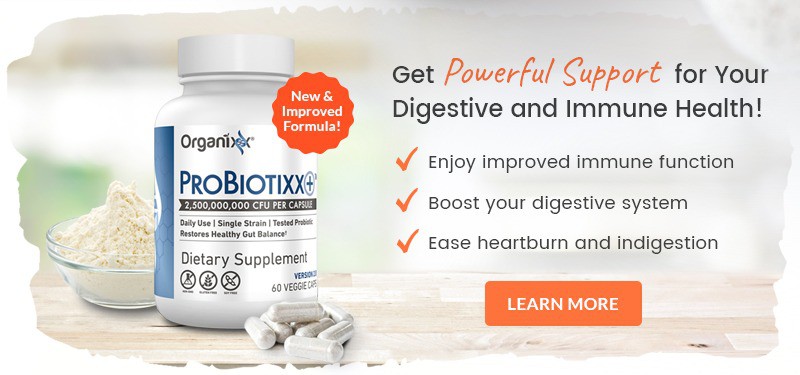
What are essential oils? These extraordinary substances have a few thousand years of historical use for treating everything from an infected wound to the plague. There are 188 references to essential oils in the Bible. Essential oils were even part of the ingredients used by ancient Egyptians in the embalming process for mummification.
Essential oils have been used traditionally in Greek, Roman, and Chinese medicine, although the extraction methods in ancient times certainly differed widely from today’s high-tech distillation processes.
So, just what are essential oils and what is it about them that makes them so attractive and useful beyond just smelling nice?
21 Facts About Essential Oils
Here are 21 interesting facts about essential oils that help to explain what they are and what makes essential oils so beneficial…
- It is estimated that only 10% of the plant kingdom has been assessed for the essential oils they contain. Each year more plants are discovered and identified for the essential oils they contain that may be beneficial for therapeutic purposes. Today over 300 essential oils are distilled or extracted worldwide.
- The term “essential oil” is a misnomer because technically they are not oils at all. They contain highly concentrated plant compounds, but because they contain no fatty acids (which is what makes an oil an oil) they are not actually an oil.
- Essential oils exist in plants to help them be more resistant to disease and insect invasion. These oils are located in the seeds, leaves, stems, bark, roots, fruit, and flowers of the plants. What protects the plant also has a wide range of uses for humans.
- The total essential oil yield of plants is generally quite low; it rarely exceeds one percent. For instance, it takes about 22 pounds (9.9 kg) of rose petals to make just 0.16 oz (5 ml) of rose essential oil.
 Each essential oil is composed of hundreds of different compounds known as phytochemicals – plant-based, naturally occurring chemicals. For example, lavender oil is known to contain approximately 200 phytochemicals!
Each essential oil is composed of hundreds of different compounds known as phytochemicals – plant-based, naturally occurring chemicals. For example, lavender oil is known to contain approximately 200 phytochemicals!- Essential oil phytochemicals fall into 13 types or categories, and each one is responsible for some of the therapeutic action of that oil. The categories include: terpenes, phenols, alcohols, aldehydes, ethers, esters, ketones, carboxylic acids, oxides, lactones, coumarins, alkanes, and furanoids.
- Essential oil molecules are unique in that they have the ability to penetrate cell membranes and diffuse throughout the skin, tissues, and blood. They can travel throughout the body in just minutes, whether applied to the skin or inhaled. They are metabolized by the body just like other nutrients.
- High-quality essential oils do not accumulate in the body over time. They exert their action and they pass on through.
- Essential oils are known as volatile compounds, which means when they are exposed to the air, they are expelled as a gas. This is why you can smell the oil so quickly after taking the cap off a bottle of essential oil. It also means that when applied to the skin “neat” (undiluted) it can evaporate off the skin fairly quickly.
- Essential oils are lipid soluble, meaning they dissolve in fats or oils. But because they are volatile and do not themselves contain fats, they leave no oily residue. If you combine essential oils with a carrier oil, it improves absorption and decreases how rapidly they evaporate from the skin.
- Essential oils contain and carry oxygen molecules. These oxygen molecules help transport nutrients into cells. When a nutritional deficiency exists, there is also a corresponding oxygen deficiency, and this is where disease can begin. Because essential oils carry oxygen, one can begin to see why they can be so useful for supporting a healthy body.
- Besides being oxygen carriers, essential oils may also contain potent antioxidants just as fruits and vegetables do. Antioxidants are known to fight against free radical damage which is linked to cell mutations, cellular oxidation, aging, and a sluggish immune system.
- Essential oils have been studied for their ability to support important bodily functions such as the secretion of neurotransmitters, antibodies, endorphins, hormones, and enzymes.
- Many essential oils have demonstrated potent antimicrobial properties. In vitro testing (done in test tubes) and in vivo testing (in the body) tests an oil’s efficacy against various strains of bacteria. Even bacteria that are known to be resistant to antibiotics, such as MRSA (methicillin-resistant Staphylococcus aureus) have been decimated by certain essential oils. Some of the best oils for this are tea tree oil, lavender, manuka, eucalyptus essential oil, geranium, lemongrass, thyme, and oregano.
- Research indicates that diffusing essential oils can increase oxygen in the room where the diffuser sits. It can also remove metallic particles and toxins from the air, increase ozone and negative ions, inhibit bacteria, eliminate mold, and subdue odors from cigarette smoking and pets.
- Because essential oils cannot be patented, many pharmaceutical drugs have been created by copying the natural phytochemicals found in essential oils. For instance, aspirin was created by scientists studying the nature of the bark of the willow tree. The active constituent in aspirin, salicylic acid, is chemically similar to methyl salicylate, the natural phytochemical in willow bark (also found in birch and wintergreen).
- Humans are a complex combination of body, mind, and spirit. Essential oils can help to support physical, emotional, and spiritual well-being and oils even have the ability to affect all three simultaneously.
- In our modern world one of the most common health problems, experienced by young and old alike, is anxiety. A plethora of recent studies has shown that essential oils can help with anxiety and stress relief, regardless of the reason. The essential oils with the most research showing their anti-anxiety benefits are lavender, frankincense, bergamot, vetiver, orange, lemon, ylang ylang, chamomile, and rose.
- If your olfactory system (sense of smell) isn’t working, essential oils can work on your behalf anyway! Animal studies done with lavender showed that even though the animals (who had an impaired sense of smell) could not smell the lavender oil, its calming effects were still felt. Researchers discovered that olfactory stimulation was not required for the calming effects of lavender to be experienced.
- High-quality essential oils have a long shelf life. Citrus oils, frankincense essential oil, tea tree, pine, and spruce have the shortest shelf life, being one to two years because they tend to oxidize more quickly. Storing them in the refrigerator helps to prolong their shelf life. Most other essential oils will last on the shelf between two to three years. Oils that have a high
 percentage of a compound known as sesquiterpenes tend to last the longest – up to ten years. These include sandalwood, patchouli, myrrh oil, vetiver, and a few others.
percentage of a compound known as sesquiterpenes tend to last the longest – up to ten years. These include sandalwood, patchouli, myrrh oil, vetiver, and a few others. - Store essential oils in dark glass bottles, out of sunlight, with the caps tightly closed, and/or refrigerated to lengthen their shelf life. You can tell if an essential oil has deteriorated if the aroma has changed, it has thickened, or become cloudy.
2 Ways to Tell the Difference Between an Essential Oil and Fragrance Oil
Many people believe that essential oils and fragrance oils are the same things, but this is not the case. Here are two ways that will help you to determine whether an essential oil is high quality or merely a fragrance oil:
- If it is a fragrance oil, the label may contain the word “fragrance” or “perfume.” The term “natural fragrance” might also be used, but don’t be fooled because the word “natural” in this case has no meaning at all. Even the words “essential oil” on the label can be misleading.
- A good quality essential oil should have the scientific name for the plant on the label. For example, Peppermint is Mentha piperita. Some bottles may say 100 percent pure, but this still may not be the case. Look for the word “organic” which indicates the plants were grown without pesticides or herbicides which can lodge within the cells of the plant and cause problems for health. Sometimes essential oil ingredients do not have organic certification but are grown without pesticides or herbicides. Before you buy, find out how that company grows its plants and distills its oils.
It is estimated that at least 77% of essential oils on the market are synthetic. These oils not only have little to no therapeutic value – they can be toxic and dangerous to use. Roughly 21% of essential oils on the market are adulterated with fillers and/or toxic chemicals.
That leaves a tiny two percent of essential oils on the market that are the real thing, meaning the plant ingredients are properly grown and distilled so that their therapeutic phytochemical content is what it should be.
In the United States, essential oils are not regulated or certified which means there are no quality control guidelines in place for essential oils whatsoever. As a smart consumer it is up to you to learn about what you are buying, and the practices of the company that manufactures the oil.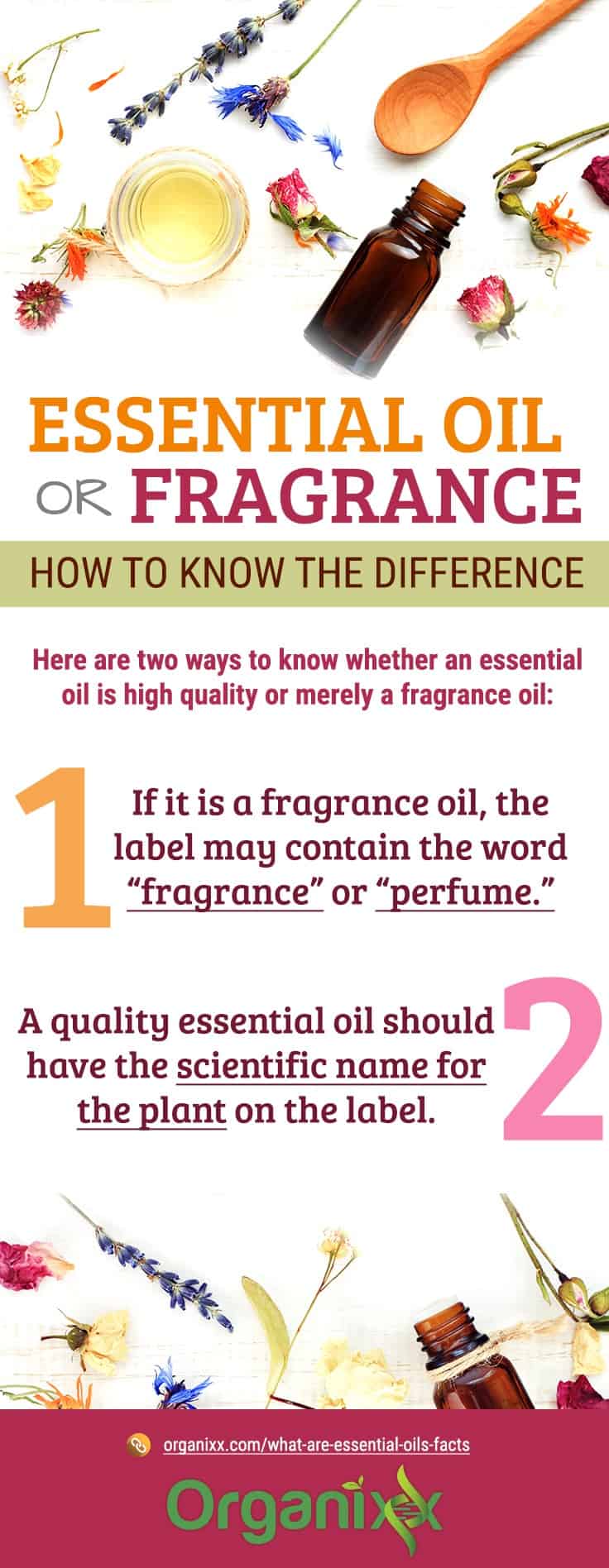
How to Test an Essential Oil for Purity
To test an essential oil for purity here is a quick and easy test you can do. It is not fail-proof but in most cases will give you a good idea about the quality of the oil you are testing. Put a single drop of oil on a piece of white paper and let it dry. If it leaves behind an oil ring, it is most likely not a pure essential oil.
(Note: If the oil you are testing is a blend, it may have a carrier oil with it, so there are exceptions to this guideline. But the label should tell you whether or not a carrier oil is present.) Also, some essential oils are thicker in consistency and have a natural, deeper color that can leave a slight tint behind, but it still should not be oily. Sandalwood, patchouli, and German chamomile fall into this category.
The powerhouse trio of herbs in Magi-Complexx Essential Oil provides the strongest, most synergistic healing effect, helping sufferers of arthritis pain, constant muscle aches and pains, neuropathy, systemic inflammation, slowed wound healing, circulatory challenges, as well as skin irritations like eczema, psoriasis, and acne.



